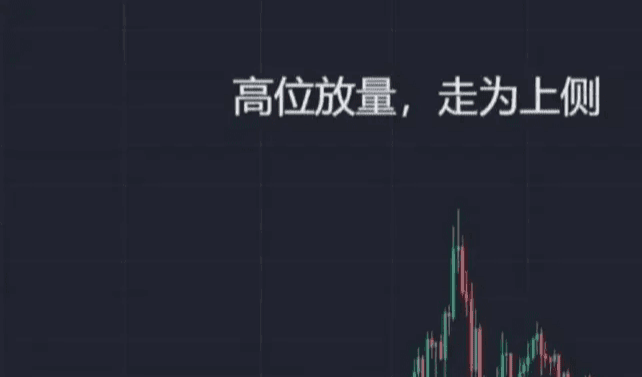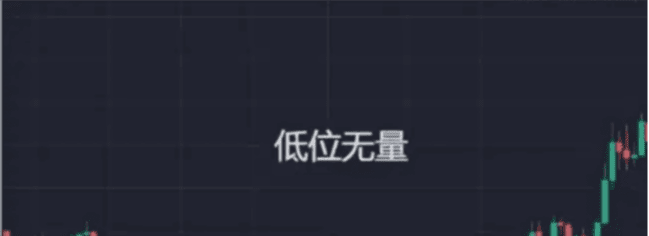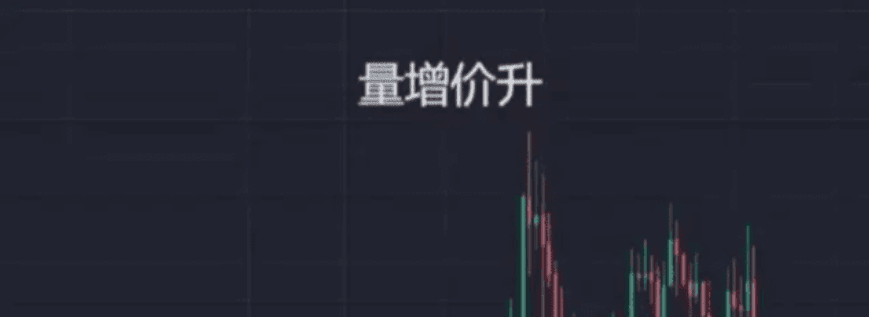We do not have insider information, funding advantages, or trading experience to withstand several rounds of bull and bear markets.
What we can rely on is only to understand the market, understand ourselves, establish rules, and control emotions.
The cryptocurrency world is not a shortcut to wealth but a battlefield where only a few survive.
1. First, recognize the market: this is a world ruled by uncertainty.
The essence of the market is not a technical game, but a high-complexity probability game.
You must accept that even the most brilliant strategy cannot stabilize profits in all environments. Any trading system claiming '100% win rate' is a fabrication.
What we can do is not to conquer the market but to adapt to the market, using discipline to combat uncertainty.
Profits and losses stem from the same source: the way you make money determines the depth of your losses. Heavy positions can double, but also lead to zero. High leverage can also lead to severe consequences.
Rod seizing rebounds: eating a piece of meat, but just one wrong direction can lead to immediate liquidation; counter-trend averaging down: sometimes can relieve the loss, but in a one-sided trend, it is a slow suicide. Those who can truly survive as traders are those who repeatedly bet in 'probability advantage' in a systematic way—earning more when right and losing less when wrong.
2. Recognizing yourself again: You are not a genius, nor are you a cool evening.
Most people do not die in the market due to ignorance but due to self-righteousness: obsessed with predictions: trying to catch all tops and bottoms; technical obsession: piling indicators while ignoring positions and risk control; superstitious luck: attributing profits to oneself and blaming the market for losses; overconfidence: after winning a few trades, thinking oneself invincible.
Please remember: Discipline > Technique, Execution > Inspiration, Stability > Excitement.
Real profitable trading is often boring.
3. The underlying logic that ordinary people can also make money
You do not need to be a genius; you only need to establish a trading system that can be replicated and adhered to.
1) Capital management: only use a small portion of total capital for each opening position, lightly test the waters; confirm the trend before increasing positions, and do not go all-in at once. Total position should not exceed 30%, keeping some room for maneuver.
2) Suitable for one's own cycle: Short-term: Those with strong market feel and quick reactions play in waves; suitable for those who can endure fluctuations and ride trends; Long-term: Those who understand macro fundamentals have a better chance of winning.
3) The trading system should be simple, executable, and replicable. Trend strategy: follow the trend, do not increase positions against the trend; fluctuation strategy: buy high and sell low, stop-loss must be quick; arbitrage strategy: cross-platform price difference, small fluctuation arbitrage, high win rate but slow.
(4) Stop-loss and take-profit must be mechanically executed. Set the stop-loss line before entering the market, and take profit can be done in batches when the time comes. Do not be greedy or timid; it is enough to capture the middle segment of the trend.
5) Emotion management: reduce the frequency of watching the market, avoid impulsive trading, accept losses, do not retaliate after a loss, do not inflate after a win, write trading logs, continuously review and optimize the system.
4. The key to truly surviving: mindset and compound interest
The hardest thing to defeat in the cryptocurrency world is not the market but one's own greed and fear.
What you need to do is not 'ten times in a year' but rather stable annual returns + strict stop-loss + not being eliminated by the market.
Don't underestimate the importance of 'live observation'; compound interest is the only way for retail investors to match institutional strategies: 30% annualized returns, 10 years is 20 times; 50% annualized returns, 10 years is 57 times; doubling in one year, blowing up in the second year is 0.
But if you make a mistake and lose...
Final advice: Don't become a 'legend', please become a 'survivor.'
In the cryptocurrency world, legendary stories only belong to a very few. The vast majority of winners are those ordinary people who can survive in the long market.
Make fewer mistakes, execute more, frequently review and optimize your system while maintaining rationality and patience.
The market is always changing, but the rules do not. Your only goal is: to not be washed out in this wave of sand. If you feel confused, it might be a good idea to bookmark this article as a starting point for your trading journey. Not for getting rich quickly, but to stay at the table.
Let’s encourage each other.
There are many ways to trade, but not all methods can be learned. We all hope to achieve good results with the simplest methods, while friends in the cryptocurrency world are not incapable of selecting good coins but thinking too complicatedly!
Trading is about doing four things well: selecting targets, buying points, selling points, and managing positions. Traders need to have an independent trading system to execute these four actions.
In trading practice, the abc trading strategy + stable win rate, simple and easy to understand.
(1) Source and basic connotation of the strategy
The abc trading strategy is an interpretation based on the author's self-developed abcd core trading theory.
The teacher's trading method applies like a fish to water in the A-share market, while Lele has expanded this theory in conjunction with the characteristics of cryptocurrency trading.
The abcd core trading theory incorporates the essence of Dow Theory, Wave Theory, Turtle Trading Rules, Dava's Box Theory, Trading Psychology, and other theories.
Figure 1 is a classic uptrend. The underlying logic is that the bottom rises, and the uptrend continues.
Figure 2 is a classic downtrend. The underlying logic is that the top decreases, and the downtrend continues.
Any K-line trend of any trading target is a continuous repetition and superposition of these two classic patterns. A deep understanding of the following two classic patterns is essential.
Understanding is the fundamental essence of mastering the abc trading strategy.

(2) Buy and sell points
The abc battle method focuses on right-side trading, pursuing a high win rate but not extreme profits. It advocates phased positions, phased take-profits, and phased stop-losses to maximize risk dilution.
Taking Figure 1 as an example, the buying points appear at X and Y; the buying characteristic at point X is 'Four In' (the closing price exceeds the highest price of the four K-lines on the left), while the buying characteristic at point Y is the closing price exceeding point B.
There are two stop-loss points; the first is 'two exits' (when the current K-line closing price is lower than the lowest price of the two K-lines on the left), and the second is point C, and all losses should be stopped here.
The abc battle method allows for a certain position of left-side trading; the key is to control positions and stop losses.
Applied in practice to Figure 3, it has formed an upward abc structure; Arrow 1 is the 'Four In' buying point (the two buying points X and Y described in Figure 1 coincide in the practical application of Figure 3).
The two stop-loss points are Arrow 1 and possible 'two exits' after that, as well as point C.
Note: 'Four In, Two Out' also comes from teaching others

Compared to stop-loss points, take-profit point models are more complex, with more selection dimensions, and require multiple take-profits.
The three basic types of take-profit methods are:
1. 'Two exits' take-profit.
In Figure 3, Arrow 2 indicates that the closing price is lower than the lowest price of the two K-lines on the left, indicating a take-profit.
2. Excess profit take-profit.
A rapid volume increase in any time dimension K-line indicates a quick surge, which is a partial take-profit, belonging to left-side take-profit.
3. Multi-point overlapping take-profit.
Draw a horizontal line at the D point closing price; multi-points on the right near the same horizontal line can choose to take profit near this level.
In addition, there are low-volume take-profit, critical point take-profit, box doubling take-profit, etc.
(3) Position: The size of the position determines the profit margin, with many factors, and varying weights.
The main principle is:
1. When the overall trend is upward, the opening position can be higher, while opening shorts requires lighter positions. The opposite is true.
2. The more significant the volume of gains exceeds losses, the higher the position ratio; if the volume is flat, position control is required. The opposite is also true.
3. Left-side opening positions generally should not exceed 1/4.
The above are the key points of the basic version of the abc strategy.
On this basis, combined with complex K-lines, with the goal of pursuing a higher win rate, you also need to use tools such as Fibonacci retracement, multi-point connections, ascending/descending channel lines, triangles, etc., in conjunction with the abc battle method.
The above content will be shared in the advanced version of the abc strategy, while detailing left-side opening positions, more take-profit methods, 'Four Doesn't Enter', 'Two Doesn't Exit', and other advanced ways to play.
Three rules for volume-price relationships: Enter when volume increases and price rises; exit when volume is flat and price falls! 1. The best strategy is to act when there is large volume at high positions.

A high position usually refers to the coin price being near historical highs or running high with 3-4 large cycles. If there is a volume increase at this time, it indicates that the main force is dumping goods and distributing chips to retail investors. At this point, it is best to exit and observe. If there is no relatively large volume at this position, do not exit easily.
2. Low volume at low price is the best strategy.

Low volume at low price is because the main force may still be distributing and has not reached the stage of absorbing funds. As long as there is no absorption, it is not the right time for a substantial rise; only when there is volume can it be confirmed that the main force is taking action.
Therefore, one must dare to follow at the volume increase at the bottom, even if wrong, it is worth it; only the waiting time will be longer, but it will not lead to losses.
3. Entering the market when volume increases and price rises is not to be feared

As the trading volume increases, the price continues to rise, indicating that the market has this power driving it. According to trend principles, there will be subsequent actions, not just one wave, so be bold in entering the market.
But also be careful when encountering situations of increasing volume and stable price or increasing volume and rising price.
Regarding the overall market:
If the market volume continues to strengthen, there will be more opportunities for each coin; the overall operational guideline is to muster strength upstream.
If the opposing volume is not very obvious, it is best to strike with light positions; if the energy weakens, there are few opportunities for individual stocks, and it is best to walk away without taking action easily.
Regarding individual coins:
1. When trading volume expands, the overall market is still building for a substantial rise; when trading volume shrinks, energy shrinks, do not pay too much attention to coins with low volume.
2. Pay attention to positions; both high and low volume may cause trend reversals, so always check.
3. High trading volume, significant price drop; if volume shrinks in the later stage, it indicates that the downtrend is about to end.
The day the coin price stops falling is the day of reversal.
How to maintain a 90% win rate in the cryptocurrency world!!!
The secret to maintaining a 90% win rate in the cryptocurrency world is that in this world full of temptation and risk, many investors aspire to maintain an extremely high win rate.
However, achieving a 90% win rate is not easy. It requires in-depth market understanding, rigorous investment strategies, and strong risk control capabilities.
The most challenging aspect of trading cryptocurrencies is not selecting coins or buying and selling but rather waiting; the most difficult aspect of life is not effort or struggle but making choices. A downturn cleanses restlessness, while an upturn tests cultivation. Trading can lead us to continuous growth, and growth is painful; this pain does not come from the growth itself but from facing so many changes and unforgettable experiences during the growth process.
Disciplined people in the cryptocurrency world find joy even in pain; where there is hope, hell can also be heaven.
In the cryptocurrency world, retail investors always give up on coins that haven't risen and chase coins that have already risen; in life, people often cherish what they haven't obtained while forgetting what they already have.
The reason for losing money in cryptocurrency trading is not due to simplistic thinking but due to the complexity desired; the reason for happiness in life is not because of getting more but because of caring less.
The old trader only does real trading; the team also has positions to enter quickly.
